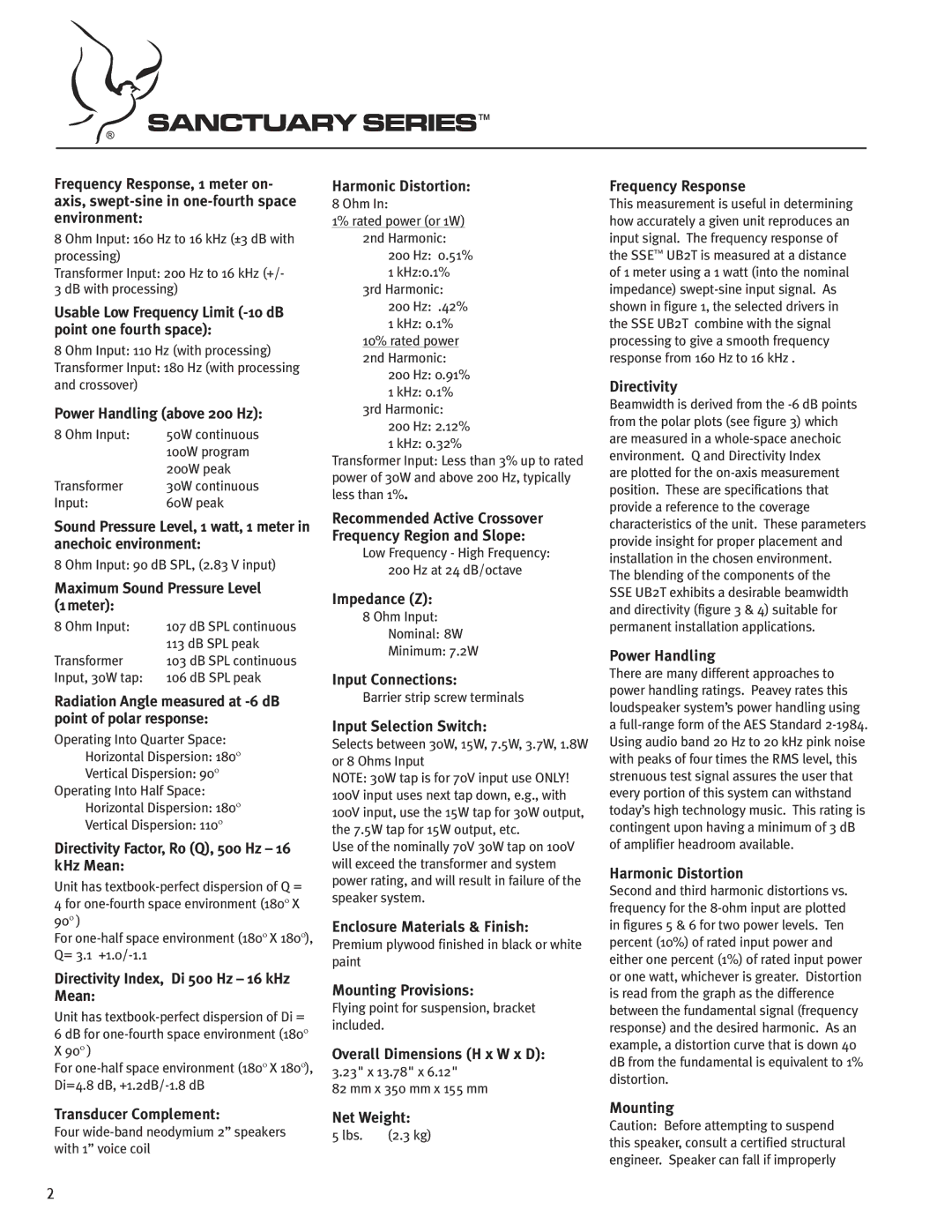SSE UB2T specifications
The Peavey SSE UB2T is a highly regarded, dual-channel sound reinforcement system designed for both live sound applications and studio environments. Renowned for its versatility and innovative features, the UB2T brings together advanced technology and impressive performance to meet the demands of audio professionals.One of the main features of the SSE UB2T is its dual-channel design, which allows for simultaneous processing of two input signals. This is particularly beneficial for musicians, bands, and performers who require a reliable and powerful system to amplify vocals and instruments. The unit is equipped with a high-quality, built-in mixer that enables seamless integration of multiple audio sources, providing users with the control they need to achieve the desired sound.
The Peavey SSE UB2T utilizes advanced signal processing technology, including Peavey’s own patented TransTube circuitry. This technology replicates the warmth and richness of tube amplification while maintaining the reliability and durability of solid-state designs. Users will appreciate the fullness and character of the sound, which can enhance the overall listening experience, whether in a small venue or a large auditorium.
In terms of connectivity, the UB2T is designed with convenience in mind. It features a variety of inputs, including XLR, 1/4-inch, and RCA connectors, making it compatible with a wide range of audio sources. This flexibility allows users to connect microphones, instruments, and playback devices with ease. The output capabilities are equally impressive, with options for balanced and unbalanced outputs to suit different setups.
Another standout characteristic of the SSE UB2T is its rugged build quality. Built to withstand the rigors of touring and live performances, the unit has a durable chassis that ensures it can handle the demands of transport and frequent use. Additionally, the front panel includes a user-friendly layout with intuitive controls for real-time adjustments, allowing sound engineers to make necessary changes on the fly.
In summary, the Peavey SSE UB2T stands out as a powerful, versatile, and reliable sound reinforcement system tailored for professionals. With its dual-channel capability, advanced signal processing, comprehensive connectivity options, and robust construction, it delivers high-quality audio performance suited for any setting. Whether in a live concert, studio recording, or public speaking event, the SSE UB2T is a valuable tool that enhances the sound experience for both performers and audiences alike.

